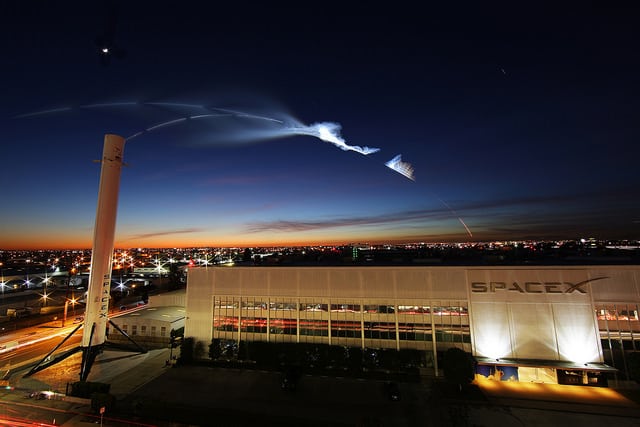Latest News

Iridium 4 mission time-lapse. Photo: SpaceX.
SpaceX has officially reached the midway point of the Iridium Next launch campaign, lofting an additional 10 satellites for the constellation in the evening hours of Dec. 22. Illuminated against an inky dusk backdrop, the Falcon 9’s first stage separation and secondary stage ignition left a bright streak in its wake as it crossed the horizon.
The sight spurred mass confusion and wonder as onlookers around Los Angeles watched the rocket soar into orbit.
This #SpaceX launch from Vandenberg Air Force Base was exactly 800 times cooler than I thought it would be. This was the view from Old Town Pasadena. Thanks to ABC7 Photog Jamie Evans for the Video. #rocket #UFO pic.twitter.com/PbtqWki6J7
— Rob Hayes (@abc7robhayes) December 23, 2017
SpaceX co-founder and Chief Executive Officer (CEO) Elon Musk took to Twitter to poke fun at the hysteria.
Nuclear alien UFO from North Korea pic.twitter.com/GUIHpKkkp5
— Elon Musk (@elonmusk) December 23, 2017
The launch marked the first time Iridium satellites rode atop a previously flown rocket. SpaceX used the same Falcon 9 booster for an Iridium mission back in June.
SpaceX has now orbited a total of 40 satellites for the Next constellation and expects to finish the launch campaign in 2018. Once complete, the Next constellation will comprise 66 active satellites and nine on-orbit spares divided into six polar orbiting planes.
According to Iridium, the Next constellation will enable and introduce new services such as the company’s global communications platform, Iridium Certus. The satellites also carry Aireon’s real-time aircraft surveillance payloads and maritime Automatic Identification System (AIS) payloads, co-operated by Harris Corporation and exactEarth.
All Iridium Next launches take place out of SpaceX’s West Coast launch facility at Vandenberg Air Force Base in California. Four additional launches are planned for the first half of 2018, including a rideshare that will carry five Next satellites and the twin satellites for the NASA/German Research Center for Geosciences (GFZ) Gravity Recovery and Climate Experiment Follow-On mission.
Having a sinking feeling that most people actually do think it was aliens …
— Elon Musk (@elonmusk) December 24, 2017
Stay connected and get ahead with the leading source of industry intel!
Subscribe Now